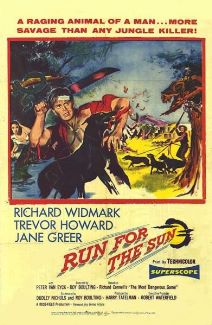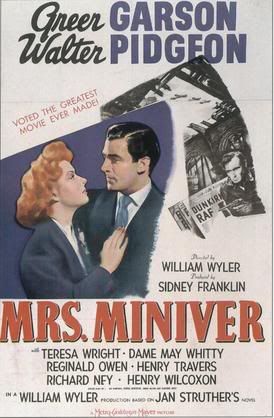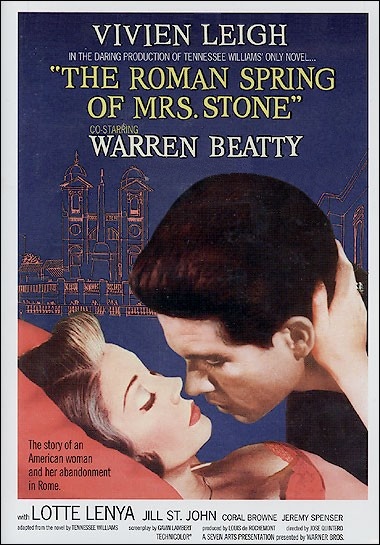2007: I'm Not There
I'm Not There (Haynes, 2007) 9/10
 American singer Bob Dylan is a mysterious figure. A man of countless contradictions, a projector of multiple personalities. In a career spanning almost half a century, Dylan has been a pop culture icon reviled and eulogized in equal measure. A slippery iconoclast, whom the world wanted to provide numerous answers to its problems, but in return only received countless questions about their voice of a generation.
American singer Bob Dylan is a mysterious figure. A man of countless contradictions, a projector of multiple personalities. In a career spanning almost half a century, Dylan has been a pop culture icon reviled and eulogized in equal measure. A slippery iconoclast, whom the world wanted to provide numerous answers to its problems, but in return only received countless questions about their voice of a generation. The world could never catch up with Dylan. Thus, it's only fair that any biographical representation of Dylan's life should not try to encapsulate his essence in a standardized narrative with positivist arcs and ultimate redemption. In his unconventional 2007 Dylan biopic I'm Not There, American director Todd Haynes does neither. Rather, than straddling onto a traditional linear tale of ascension and descent, Haynes understands the bewildering nature of his subject does not call for either. Consequently, I'm Not There does not feature a sanitized composite character, as its principal figurehead.
Haynes' Dylan- like the man himself- is a multifarious creature: unwilling to be compartmentalized into the conventions of the genre. In I'm Not There, Haynes utilizes six different actors to present six different sides of Dylan: outlaw, poet, prophet, fake, star of electricity, international rock star. The result is a Fellini-esque cornucopia of surreal imagery and shifting identities; a myriad of popular images with all their positive and negative attributes nakedly exposed. It is a rare cinematic homage incorporating abrasive, sinister and curmudgeonly characteristics with honesty and without fear of reprehension.
Shot in both monochrome and Technicolor, I'm Not There is an episodic blend of documentary, art cinema and psychedelia encapsulating Dylan in all his fluctuations, illogical meanderings and chaotic bluster. The name Bob Dylan is never mentioned throughout the proceedings, despite Dylan having authorized the project and its use of his music. Flitting between the various tropes of Dylan, Haynes makes little attempt to neatly connect them together. Both aspects are neither a hinderance. Instead Haynes' parallel universe becomes a dynamic microcosm, allowing for the various inflections to have their own objective space to fully develop.
For those familiar with Dylan, the connections and allusions are clearly apparent in this amalgamation of half-truths and quasi-fictions. There is Dylan the liar, portrayed by Marcus Carl Franklin in the film as a young Woody Guthrie obsessed African-American adolescent, who begins creating his own mythology at a young age; Ben Whishaw stars as the mumbling teenager fixated by French poet Arthur Rimbaud; Christian Bale appears in a dual role as Jack Rollins, the folk icon and later as Paster John, the folk singer who converts to evangelical Christianity in the Seventies.
Although Heath Ledger plays an actor who once played the Dylanesque Jack Rollins in a film, his character represents Dylan during the Blood On The Tracks period through his failed marriage to Claire (Charlotte Gainsbourg); standing in for Dylan's own fractious break-up with his wife Sara. Cate Blanchett appears in her celebrated turn as Jude Quinn, the snarling, drug-addled carbon-copy of Don't Look Back era Dylan; while Richard Gere plays a variation of the older Dylan through the offbeat Billy The Kid, who resides in a world where the pastoral and the childlike grotesque meet.
At the core of Haynes' inventive art film is the elusive search for truth, both biographical and personal. Dylan's status as a walking cultural enigma has been the source of his attractiveness for scholars, writers and journalists for almost half a century. I'm Not There is not a direct portrait of Dylan, but it plainly expresses his dualistic emergence and suffering at the hands of truth. While Dylan's manipulation of facts enabled him to escalate the development of his own mythology through dislocating truth, the film also acutely puts forth the mental and emotional anguish caused by press galleons who engage in public inquisitions about his lyrics and the defeatist attitudes that cripple his marriage.
As with Dylan's own lyrics, Haynes opens up Dylan's life to interpretation. At times Haynes' film is introspective, poignant and crushing, while at others flamboyantly original, detached and vague. Like with his earlier study of musical personalities Velvet Goldmine, Haynes smartly posits the film with the cultural template of its era. In I'm Not There gives several playful winks to the films of the 60's and 70's, particularly Federico Fellini (with two sequences heavily borrowing from the opening of 8½), Godard and Altman, as well as an ironic interpretation of PBS documentaries. By utilizing such artistic sources in tandem with period footage, Haynes gives his non-chronological film, a necessary grounding through which his flirtatious imagery can riff on Dylan's legend at will. In doing so, Haynes creates a kaleidoscopic prism through which his swirling array of colourful ideas can be harnessed into a uniform cultural document.
Blessed with a series of strong performances, I'm Not There is a fantastic, original interpretation of both the varied platitudes of Bob Dylan, but also of the possibilities within the biographical genre. Structured around a series of vignettes, I'm Not There is a definitive example that style can continue to successfully exist in contemporary American cinema. Although the film is perhaps too leisurely paced at times, it does tap into is source material with verve and a critical eye. While the assorted images do not always neatly conform to one another, they do project a collective examination of truth, socio-cultural attitudes and individual chaos. In doing so, Haynes creates an idiosyncratic aesthetic gem, which in spite of its rough edges sparkles throughout.
* I'm Not There is available on DVD through Alliance Atlantis Home Video
Other Todd Haynes films reviewed:
Velvet Goldmine (1998) 8/10
Copyright 2008 8½ Cinematheque
Labels: Alliance Atlantis, Haynes, Weinstein Company


.jpg)

